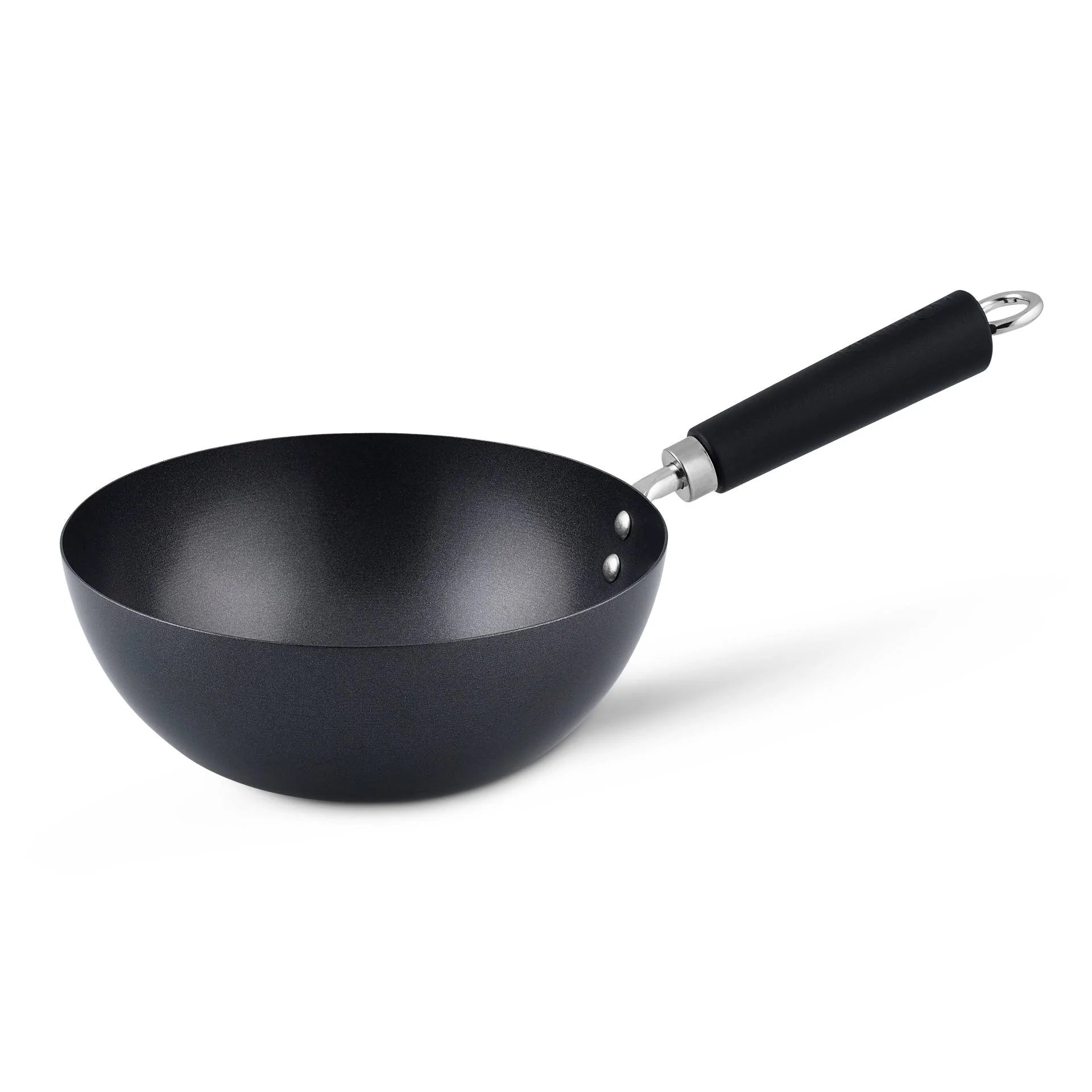Mistakes Everyone Makes With Their Wok

Non Stick Woks are a crucial part of Chinese cooking, but their versatility and utility makes them an equally important part of many kitchens all around the world. However, love them as we might, many of us don’t quite know how to make full use of our woks. On their lightning-fast migration across the world, woks perhaps travelled a little faster than the knowledge of their proper use. That’s where we come in.
At Ken Hom, we’re on a mission — to spread quality Chinese cookware and utensils, but also to dispense the knowledge of their proper use. Together, this helps more people cook delicious, healthy food for themselves, their families and their friends.
Read on for our guide to common wok mistakes, and some tips on how to get around them. Whether you’re a seasoned cook or a complete beginner, take your wok game to the next level!
Never seasoning the wok
Like cast-iron cookware, woks need to be “seasoned” by coating them in a thin layer of oil in preparation for cooking. Professional chefs will do this before every use of the wok, however, at home you may be able to get away with seasoning every other or every third meal.
To season a new wok, wash it thoroughly, then heat it all over. Once cooled, rinse it again, before using an oil-soaked cloth (or some kitchen roll) and a medium heat to cover the pan completely in a very thin layer of oil.
For older woks, simply give a good rinse followed by the last step.
By coating your wok with oil, you make food less likely to stick to the pan. Seasoning allows you to cook faster at a higher heat, improving flavour. It also saves you plenty of hand-scrubbing after the meal.
Not using the right oil for your wok
In the UK, our proximity to European cuisine means some of us have a tendency to use olive oil and butter before other oils. Unfortunately, however good these oils might be for Italian, Spanish, French or classic English cuisine, they fall flat when it comes to Chinese and East Asian cooking.
Olive oil and butter both have quite low smoke-points. This means they begin to burn, evaporate and turn acrid at a relatively low temperature. In the high-heat, flash-cooking world of Asian cuisine, this isn’t what you want.

Plain old vegetable oil and chefs-favourite peanut oil both have far higher smoke points, letting you heat your wok until it’s sizzling. For those looking for a low saturated-fat alternative, pressed rapeseed oil is another good option.
Your wok isn’t hot enough
In the UK, a lot of our meals are cooked slowly on a low heat. But when it comes to stir fries, we have to suspend this instinct! The best way to cook a stir fry is very quickly at a very high temperature.
If you’re in a rush, it can be tempting to switch the hob on and get going right away — and we understand! When you have got time, however, let your pan heat up for a good while before you commence cooking. The depth of flavor and crisp texture will more than make up for the wait.
The food in your wok is overcrowded
Woks feel quite large because of their shape, but don’t be fooled. The part of the wok that does most of the work in cooking – the bottom – is actually quite small. The knack in stir-frying lies in getting the ingredients into contact with the bottom in regular rotation.
For those of us who like to cook in-bulk, this becomes much harder when there’s too much food in the pan. Overloading your wok also prevents the moisture your vegetables naturally release from evaporating. The result is a sad, soggy stir fry.
You haven’t got the right wok
Wok won’t heat up fast enough or hot enough? Struggling to prepare the right amount of food with a small wok? Battling with a scratched non-stick coating or a wobbly handle?
Ken Hom woks are made with quality carbon steel, the go-to material in modern Chinese cooking. Whether you opt for a traditional carbon steel wok design or a non-stick coated pan, our woks outperform supermarket competitors and can go toe-to-toe with top-end models.
Properly taken care of, a Ken Hom wok might be a culinary companion for life. And, with a few small adjustments to your stir-frying technique, you’ll be producing tasty Chinese food in no time.








